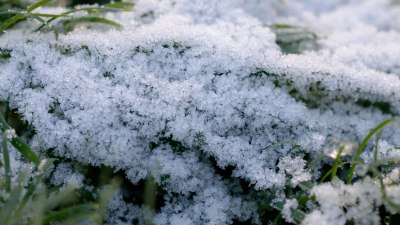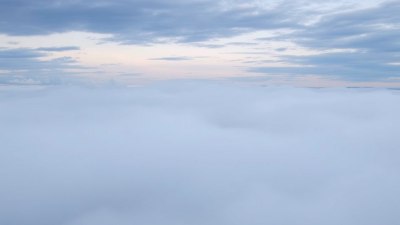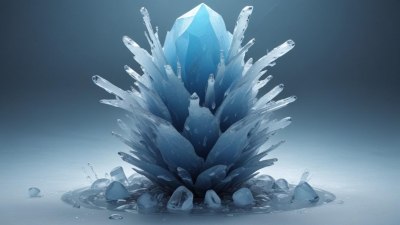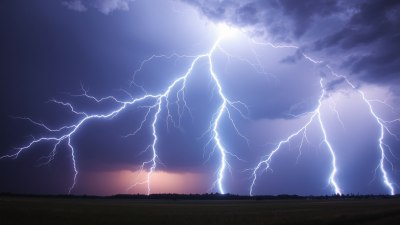What Is Graupel and How It’s Different from Snow and Hail
Discover the unique characteristics of graupel and how it differs from snow and hail.

When considering the myriad forms of precipitation that nature delivers, graupel is one phenomenon that may often be overlooked in favor of more common types such as snow or hail. Despite its relatively obscure status, graupel is strikingly interesting, both in its formation and its distinctive characteristics. Understanding graupel not only enriches our knowledge of meteorological phenomena but also enhances our overall appreciation for the diversity of weather patterns. In this article, we will explore what graupel is, how it forms, and how it differs from snow and hail, shedding light on its unique features and classifications.
Defining Graupel
Graupel is a form of precipitation that consists of small, white pellets that are soft and sponge-like in texture. These pellets are created when supercooled water droplets collide with ice crystals in the atmosphere, leading to the accumulation of a rime on the surface of the ice crystal. The result is a soft, frosty pellet that resembles snow but has a denser and more compact form. Graupel usually has a diameter of about 2 to 5 millimeters, making it relatively smaller than most hailstones but larger than typical snowflakes.
The Formation Process of Graupel
The process behind the formation of graupel involves a combination of temperature conditions, moisture, and airflow within the atmosphere. It typically occurs in colder climates and is often associated with certain types of storms, particularly convective storms where updrafts allow for the elevation of moisture-laden air. When this moist air rises rapidly, it cools and the supercooled water droplets come into contact with existing ice crystals. The droplets freeze upon contact, forming rime ice, and as more droplets stick, the pellet grows larger, eventually falling to the ground as graupel.
Graupel vs. Snow
While graupel may resemble snow at first glance, there are key differences that set them apart. Snow is primarily composed of ice crystals that typically form in colder temperatures and often take on unique and intricate structures, influencing their shape and size. Snowflakes are formed in clouds, usually when the temperature is below freezing and water vapor undergoes a process of crystallization. Unlike graupel, which has a soft and round shape, snowflakes can vary widely in structure, appearing as delicate and complex patterns.
Furthermore, snow tends to have a lower density compared to graupel, making snowflakes lighter and allowing them to drift gently through the air, while graupel's denser configuration means it falls more rapidly.
Graupel vs. Hail
Hail, another form of precipitation that occasionally gets confused with graupel, has a distinct formation process that differentiates it from both graupel and snow. Hail is formed during severe thunderstorms and can reach sizes varying from small pellets to large, damaging stones. The formation of hail occurs in strong updrafts within a thunderstorm, where water droplets are repeatedly carried upward through freezing layers of air, packing on layers of ice with each ascent and descent until they eventually grow too heavy and fall to the ground. In contrast to graupel, hail can be significantly larger, often exceeding 5 millimeters in diameter, with some instances producing hailstones the size of baseballs.
Attributes of Graupel
Graupel presents several attributes that impact not just its comparison with snow and hail, but also its interaction with the environment. One characteristic worth noting is its softness; the texture of graupel allows it to easily crush when compressed, unlike the solid and hard structure of hail. This softness can make graupel less damaging to crops and structures, a notable benefit when considering the potential devastation hail can cause.
Additionally, due to its formation process, graupel typically occurs in brief bursts and is often associated with rapid changes in weather, leading to short-lived accumulations that can quickly melt away as temperatures rise.
Where Graupel Occurs
Geographically, graupel is more frequently observed in regions that experience cold weather patterns, particularly in the mid-latitudes where conditions are conducive to its formation. Countries with colder climates or those situated near mountainous regions, like the Rocky Mountains in North America or the Alps in Europe, may encounter graupel more frequently, often during passing snow showers or transitional weather patterns.
The presence of graupel can serve as an indicator of changing weather conditions, often suggesting an impending modification of atmospheric levels and temperature.
The Importance of Graupel in Meteorology
From a meteorological perspective, understanding graupel is essential as it provides insights into various atmospheric processes. Studying graupel can offer clues about upper-level moisture and the stability of the atmosphere, helping meteorologists predict weather patterns more accurately. The presence and frequency of graupel can also contribute to studies on climate change, as shifts in precipitation types or rates can indicate broader environmental transformations.
In summary, graupel represents a fascinating precipitation type that stands apart from snow and hail through its unique formation and characteristics. Each type of precipitation has its place in the ecosystem, contributing differently to the climate and weather systems surrounding us. By distinguishing these forms of precipitation, we enrich our understanding of meteorological processes and appreciate the interesting complexities of our weather. As climate conditions continue to evolve, the study of graupel and its relationship to other forms of precipitation will undoubtedly remain an important focus of meteorological research.











